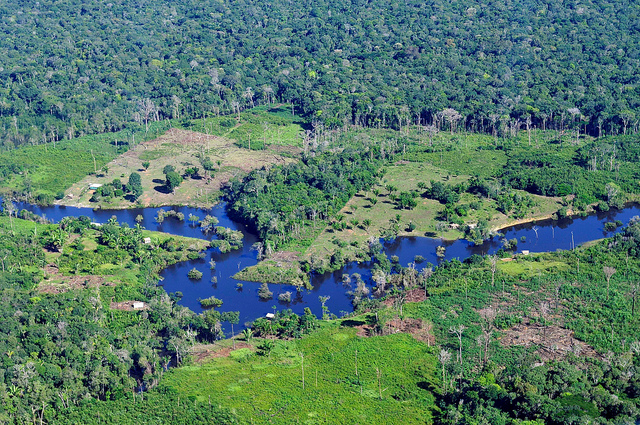In the domain of acting, the first thing we must do is to make an effort – to try. This is a necessary predicate to higher levels of function such as being responsible, reliable and innovative. . . . the doing is the point . . . [From Sally Brampton, Shoot the Damn Dog, p. 249.] No one ever accomplished…
Read More
Value for Sunday of Week 17 in the season of Growth
Championing a Bright Future

We humans like to believe that we have control over the course of our lives. The point of human Faith in this model is that we can build and shape our lives through positive action. However, there are important caveats. We live in the broader context of nature, in a universe that is mainly cold and inhospitable to life; one of life’s few certainties is our eventual death.
To build a sustainable future, we must honestly assess our place in nature, and act in ways that demonstrate our appreciation of its power. One of the greatest threats we face today is the resistance to the reality of the climate change our technologies have helped to bring about.
Our commitment to all persons includes a commitment to the well-being of future generations. We seek to create and maintain conditions under which people can thrive, indefinitely.
Real
True Narratives
Technical and Analytical Readings
Photographs
Documentary and Educational Films
Imaginary
Fictional Narratives
Poetry
- William Wordsworth, “Forth from a jutting ridge”
- Dorothy Wordsworth, “Floating Island”
Music: Composers, artists, and major works
Arnold Schoenberg’s massive and epic cantata Gurrelieder (Songs of Gurre, referring to Gurre castle in Denmark) (1911) (approx. 100-121’) (text) begins with a story of forbidden romantic love between a king and a woman from another tribe; turns in part two to pleadings to the gods, and then in part three turns to images of nature. This evolution and transformation suggest that the greatest force is not desire or belief - not love or religion - but “the healing forces of nature”. Top recorded performances are conducted by Ferencsik in 1968, Ozawa in 1979, Chailly in 1985, Sinopoli in 1996, Levine in 2001, Gardner in 2016, and Thielemann in 2020.
Wolfgang Amadeus Mozart, Sinfonia Concertante in E-flat Major for violin & viola, K. 364 (320d) (1779) (approx. 31-34’). The first of three movements (Allegro maestoso) is characteristically bright and sunny, all the voices working together and supporting each other, joyously. The second movement (Andante semplice) is an extended pause for pondering and reflection: if a goal is in mind, it will not come easily. The third movement (Presto) is ebullient. Apparently, working together has created a bright future. “The singing Allegro of the first movement is utterly galant—elegant in its simplicity—and is a small but perfectly cast sonata form. The Andante fulfills the standard role of minuet and trio . . . The Presto is the simplest of the three movements, as if Mozart knows he has done enough and is content to waive a cheerful farewell to the audience.” “In pairing the violin and viola, Mozart did not make the lower voice a ‘second’ part; if anything, it is more deeply emotional, adding richness to the work’s harmonic textures.” The work “bursts with the joy of exploring new instrumental sound combinations and possibilities. It also marks a sort of turning point, in essence summing up much of what Mozart had achieved to date as an artist.” Top recorded performances are by Grumiaux & Pelleccia in 1964; Kremer & Kashkashian in. 1984; Brown & Tornter in 1995 ***; Fischer & Nikolić in 2006; Vengerov & Power in 2006; Carmignola & Waskiewicz in 2007; Podger & Beznosiuk in 2009; and Frang & Rysanov in 2014.
Other compositions:
- Dmitri Shostakovich, The Song of the Forests, Op. 81 (1949) (approx. 34-36’), is “a seven movement oratorio for children and mixed choir which took as its subject matter Stalin's attempt to reshape the landscape through his doomed forestation campaign.” The work concludes with “A walk in the future” toward “Glory”.
- The sunny optimism in Glen Gillis’ album series, “SaxSpectrum: New Music for Alto and Soprano Saxophone” [Volume 1 (2009); Volume 2 (2014) (117’); Volume 3 (2022) (114’)], is palpable. Saxophonists have a bright future, with music like this.
Albums:
- Nicole Mitchell, “Mandorla Awakening II: Emerging Worlds” (2017) (75’): “The single suite is a musical dramatization of the futuristic allegory that Mitchell wrote for the album. It is a short story set in the year 2099 and is about the symbolic struggle between the decaying and violent old order and the peace and vibrancy of an egalitarian society.”
Music: songs and other short pieces
- Arcade Fire, “Wake Up” (lyrics)
- Bruce Springsteen, “The Rising” (lyrics)
- Coldplay, “Clocks” (lyrics)








